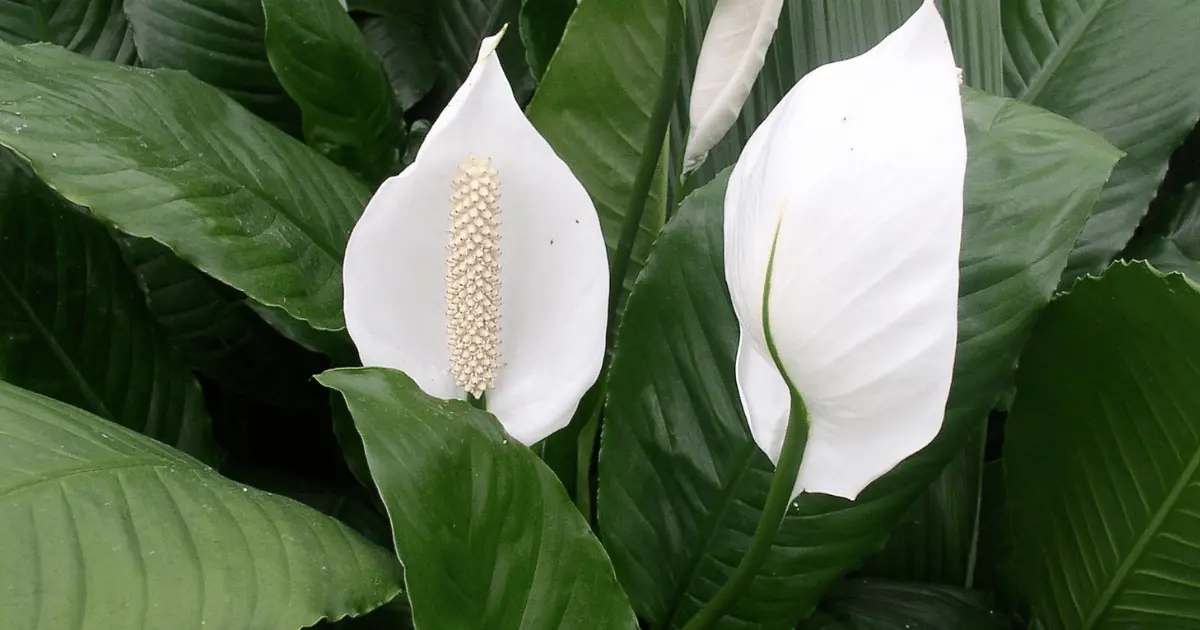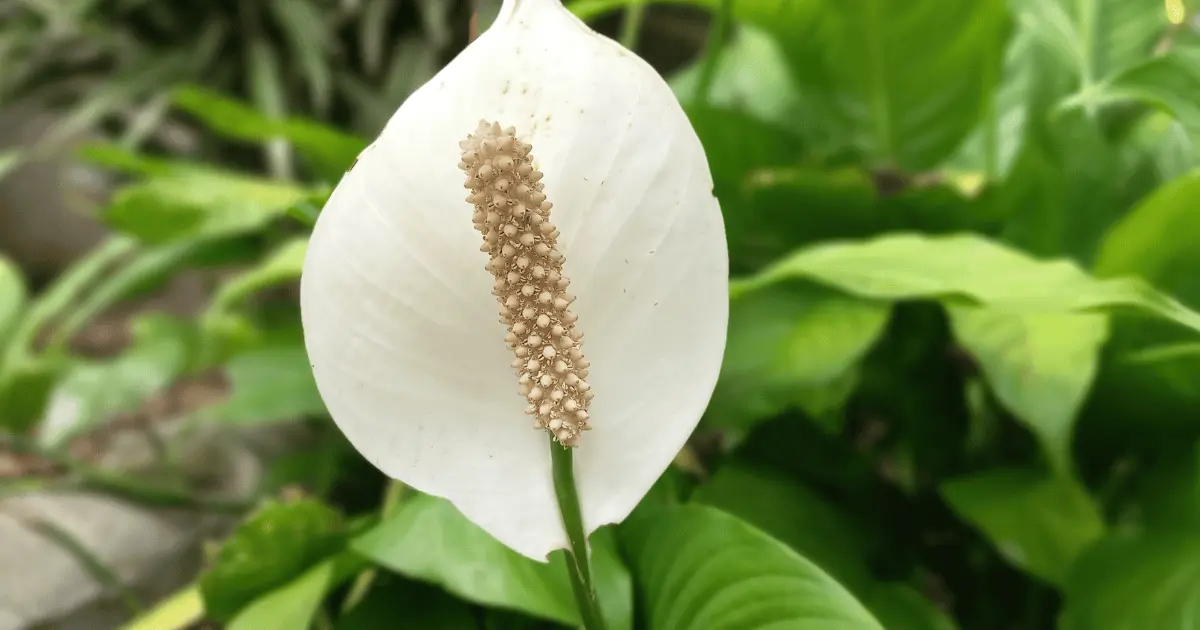Calming, tropical, and lovely. Growing Peace lilies will go a long way toward creating that atmosphere in your favorite space. They’re simple to maintain and do not require a lot of light. They are excellent air cleaners and purifiers, making them perfect for growing in the house or workplace.
How often do you water your peace lily? Worry no more if you don’t know the proper response. I did worry the same way when I got my plants, but today, I have them growing wonderfully. The secrets I learned are what I am about to share with you in this article.
Watering Your Peace Lilies

Although they require continually moist soil, peace lilies do not enjoy sitting in water that is still. Water the plant whenever the top soil becomes dry until the excess water leaks out of the container’s bottom. Reposition the pot in its saucer once the draining has finished.
Except when you forget to water them, peace lilies don’t frequently behave in a drama-queen manner. Your favorite plant may look lovely one day, but the very following day, you may discover it flopped over in its pot like a tired teen on a sofa. Do not fret! Water the plant immediately, let it absorb it, and then do it again. You’re back on track after that.
Generally speaking, water your peace lily plant every second day. It can need watering every day if the climate is dry. It might be acceptable to only water it once or twice weekly in a humid environment. Until you get used to the soil moisture of your potted peace lily houseplant, check the soil wetness with your fingers daily. You can use a moisture meter to determine how damp the soil is.
Although a peace lily prefers a regular watering routine, it will recover if submerged. The plant will droop when it needs water the most. It will revive once sufficiently hydrated, but try to keep this from happening too frequently to prevent stressing the plant. The optimal conditions for peace lilies to develop are moist, porous soil with good root access to moisture and new oxygen. In contrast to soggy, wet soil, moist soil is beneficial.
When repotting your peace lily, I recommend using a mixture of half-potting and half-orchid soil. Peace lilies can flourish in ponded water if the flow is sufficient to supply the roots with new oxygen. Although they don’t like it, these plants can tolerate the occasional drying out of the soil thanks to their hardiness. Even live peace lily plants can be delivered across the country in packages.
How Should You Water Your Peace Lilies
You can water Peace lily houseplants in some localities right from the tap. Those who live in locations where the tap water is heavily chlorinated may want to avoid watering straight from the faucet. This is because they are somewhat sensitive to the chemical. A regular watering schedule should be followed, with watering occurring when the soil’s top inch (2.5 cm) feels dry. Use filtered water if your water has a lot of chlorine in it. This plant is fine with average room humidity.
Do Peace Lilies Need Enough Water?
Peace lilies enjoy the water. High air humidity and consistent soil wetness are characteristics of a happy, healthy, Peace lily. They flourish when these houseplants have regular, dependable access to clean water. The humid, warm climate of the rainforest is familiar to peace lilies. They have evolved to withstand the dry season but may also thrive in a consistently moist environment as long as the roots have access to fresh oxygen. Use fast-draining soil, not rich potting compost, for indoor Peace lilies.
Should You Allow Your Peace Lilies To Dry Out Between Waterings?
Peace lilies do not need to dry out between waterings, unlike what many people think. The roots of peace lily plants require constant access to air and water. By utilizing a soil mixture that drains rather quickly, this is accomplished. Many gardeners combine potting soil with orchid soil in a 50/50 ratio. As a result, a porous growing medium is produced and quickly drains, leaving a wet soil matrix with air pockets.
Increasing the Indoor Humidity and Water Content Around Your Peace Lily
In the wild, peace lilies inhabit the warm, muggy conditions of the tropical rainforest. Most of the year, there is almost continual dampness in this climate. You can use a humidifier, mist or shower the plant, or place it on a dish of water and pebbles to simulate the rainforest’s natural humidity.
Mist your plant regularly with a spray water bottle, or use a handheld mister. Put the pot in a saucer or tray of water, making sure the bottom of the pot never sits directly in the water by raising the pot on pot feet or pebbles.
How To Plant Your Peace Lilies
Although peace lilies thrive in containers, they do not like to sit in pots much bigger than their root balls. How to plant one, in brief:
- Choose a container with good drainage and no bigger than one-third the size of the peace lily’s root ball.
- Fill one-third of the container with a potting mix with no compost or bark content because they’re known to house pesky fungus gnats. The mixture should also contain coconut coir, allowing the soil to re-wet easily.
- The plant’s root ball should be positioned in the container so that the top rim is about an inch below it (this leaves room for watering).
- You should add more potting mix to the area around the root ball.
- Water your peace lily until water flows out of the pot’s bottom, then place a saucer under it and transfer it to its new location.
Where To Grow Your Peace Lilies

Although peace lilies grow in closets, that doesn’t mean you should keep them there. Low light conditions cause these plants to bloom rarely. So go ahead and plant your peace lily in a hidden spot if you’re after foliage. However, put it where it will get bright, indirect light if you want blossoms. Peace lilies are sensitive to cold temperatures as tropical plants, so ensure there aren’t any drafts.
Even though they are typically indoor houseplants, peace lilies can also be grown outdoors. Plant them in constantly wet soil in a shaded area where they naturally receive more ambient light than growing indoors. Keep your peace lily plant away from children and animals since it contains a substance that, if consumed, can result in vomiting or tongue swelling.
Peace Lily Pest and Diseases
Here are some common Peace Lily pests and diseases and how to fix them:
- Fungus Gnats: Try watering less frequently first, and make sure the soil’s surface dries out in between applications.
- If that does not work, try to use home garden insecticides to kill the larvae in the soil.
- Not Blooming: Move your peace lily to a location where it will receive more bright (but indirect) light if it is not blooming.
- Dusty Leaves: Peace lily leaves are large and dust-attracting. The entire plant can be placed in the shower to be cleaned with a hose.
